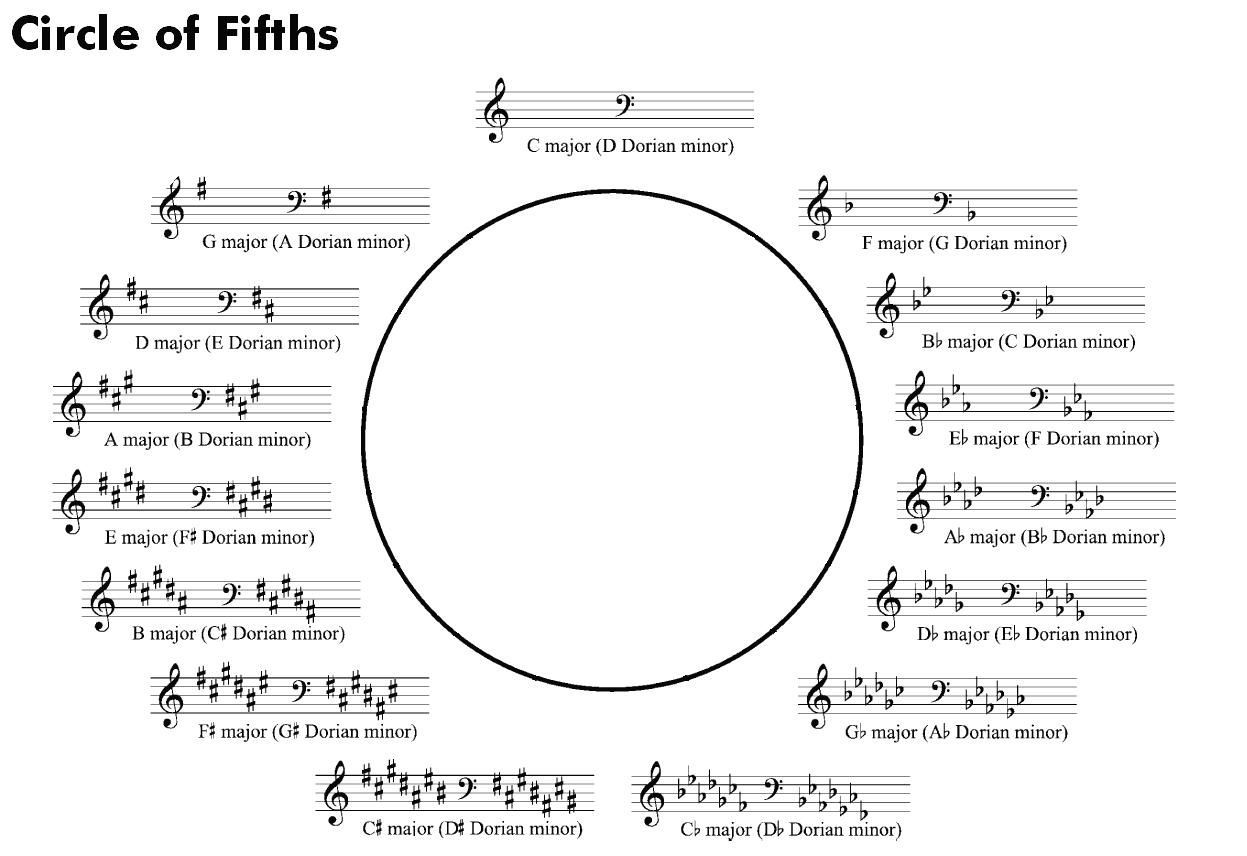The alto saxophone is in the key of Eb, a fourth above the tenor.
So a concert Eb is C on an alto sax. To get from concert pitch to the tone on alto sax, you can either go down a minor third from the concert pitch or up a major sixth from concert pitch, personally I think going down the minor third is easier.
If you were in a room full of saxophonists, a concert Eb would be C for alto saxophonists and baritone saxophonists, and F for tenor saxophonists and soprano saxophonists.

Starting with any note if you ascend by fifths you will reach all twelve keys. Descending by fifths is the same as ascending by fourths. If you begin with C major there are no sharps or flats. F Major has one flat. G Major has one sharp.
Enharmonic equivalents, such as G# sounding the same as A flat, have the same pitch, but are written differently. They show relationships and one may be easier to read or think about than another.



Dear Sir,
There is one thing wrong with this – the clockwise goes DOWN a perfect fifth, hence the Cycle of Fifths. Harmony uses the dominant (fifth) chord to progress to other keys, when constructing a perfect (final) cadence you don’t say ‘I’m going up a perfect fourth’, you go down a perfect fifth. This is the kind of confusion that leads to people calling it the ‘Cycle of Fourths’ instead of the ‘Cycle of Fifths’ as the cycle is about the function of the chords – and they function as dominants, i.e. down a fifth! About the transposition for alto going down a minor 3rd – make sure the student understands that in real terms this will not produce the note in it’s correct octave – could lead to confusion if the student wishes to go on to arrange, ever seen a tenor part where the arranger thinks it’s up a tone not a major 9th?
Hey Doug,
Thanks for your input and clarification. That is correct that the movement from the dominant chord to the root goes DOWN a fifth and that is the resolution that you hear so much in music. If you’re practicing a pattern in fifths you will probably want to go DOWN in fifths too, it makes more sense to the ear.
One time I actually played the major scales and went the opposite direction (down in fourths or up in fifths) and the saxophone clinicians were wondering what I had just played since it sounds different to go in that direction.
-Neal
Pls tell me more on circle of fifth
Hey Ademulegun
So if you travel in fifths, in one direction you go up by fifths in the other direction you go down by fifths.
The movement of going down in fifths makes more sense musically. ie G7 -> C, D7 -> G. That’s like the second piece of the ii V I progression.
It’s like you’re ‘simulating’ real music by practicing ideas around the circle of fifths.
What else would you like to know?
-Neal
how to I know what note to start on? for each major
Start on the name of the major key. So for G major start on G, E major start on E, etc.